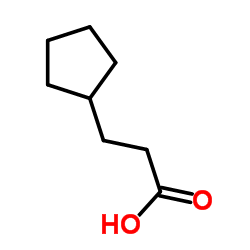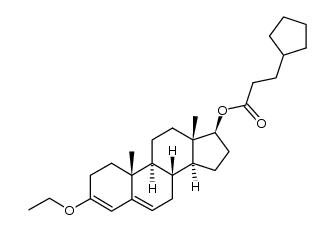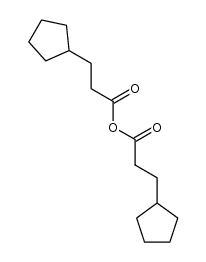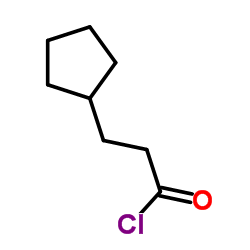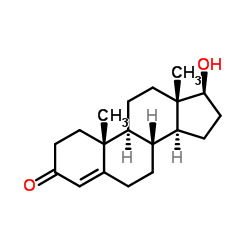58-20-8
| Name | testosterone cypionate |
|---|---|
| Synonyms |
Jectatest
Depo Malogen CYP Testosterone cyclopentylpropionate Durandro MFCD00053944 Testodrin prolongatum Andro-Cyp (8R,9S,10R,13S,14S,17S)-10,13-Dimethyl-3-oxo-2,3,6,7,8,9,10,11,12,13,14,15,16,17-tetradecahydro-1H-cyclopenta[a]phenanthren-17-yl-3-cyclopentylpropanoat Pertestis VIRILON Testosterone 17b-Cypionate Testosterone 17β-cyclopentanepropionate depAndro 200 depAndro 100 Testosterone cypionate DEPOVIRIN Testosterone, cyclopentanepropionate Testosterone 17b-Cyclopentanepropionate depo-testosterone 3-cyclopentylpropanoate de (8R,9S,10R,13S,14S,17S)-10,13-diméthyl-3-oxo-2,3,6,7,8,9,10,11,12,13,14,15,16,17-tétradécahydro-1H-cyclopenta[a]phénanthrén-17-yle EINECS 200-368-4 Testosterone 17β-cypionate (17β)-3-Oxoandrost-4-en-17-yl 3-cyclopentylpropanoate Cyclopentanepropanoic acid, (17β)-3-oxoandrost-4-en-17-yl ester Depotest 17b-(3-Cyclopentyl-1-oxopropoxy)androst-4-en-3-one Testergon Testex Leo Depo-testosterone cyclopentylpropionate Dep-Test T-Ionate-P.A Androst-4-en-3-one, 17-(3-cyclopentyl-1-oxopropoxy)-, (17β)- (8R,9S,10R,13S,14S,17S)-10,13-dimethyl-3-oxo-2,3,6,7,8,9,10,11,12,13,14,15,16,17-tetradecahydro-1H-cyclopenta[a]phenanthren-17-yl 3-cyclopentylpropanoate Androst-4-en-3-one, 17- (3-cyclopentyl-1-oxopropoxy)-, (17β)- Testosteronecypionate |
| Density | 1.1±0.1 g/cm3 |
|---|---|
| Boiling Point | 525.9±50.0 °C at 760 mmHg |
| Melting Point | 98 - 104ºC |
| Molecular Formula | C27H40O3 |
| Molecular Weight | 412.605 |
| Flash Point | 223.9±30.2 °C |
| Exact Mass | 412.297760 |
| PSA | 43.37000 |
| LogP | 6.93 |
| Vapour Pressure | 0.0±1.4 mmHg at 25°C |
| Index of Refraction | 1.546 |
| Storage condition | 2-8°C |
|
Section 1. Chemical Product and Company Identification Testosterone cypionate Common Name/ Trade Name Testosterone cypionate Section 4. First Aid Measures Eye ContactCheck for and remove any contact lenses. In case of contact, immediately flush eyes with plenty of water for at
least 15 minutes. Get medical attention if irritation occurs. Skin ContactWash with soap and water. Cover the irritated skin with an emollient. Get medical attention if irritation develops. Serious Skin ContactNot available. InhalationIf inhaled, remove to fresh air. If not breathing, give artificial respiration. If breathing is difficult, give oxygen. Get medical attention. Serious InhalationNot available. IngestionDo NOT induce vomiting unless directed to do so by medical personnel. Never give anything by mouth to an unconscious person. If large quantities of this material are swallowed, call a physician immediately. Loosen tight clothing such as a collar, tie, belt or waistband. Serious IngestionNot available. Section 5. Fire and Explosion Data Flammability of the Product May be combustible at high temperature. Auto-Ignition Temperature Not available. Flash PointsCLOSED CUP: Higher than 93.3°C (200°F). Flammable LimitsNot available. Products of CombustionThese products are carbon oxides (CO, CO2). Fire Hazards in Presence of Slightly flammable to flammable in presence of heat. Various SubstancesNon-flammable in presence of shocks. Explosion Hazards in Presence Slightly explosive in presence of open flames and sparks. Non-explosive in presence of shocks. of Various Substances SMALL FIRE: Use DRY chemical powder. Fire Fighting Media and InstructionsLARGE FIRE: Use water spray, fog or foam. Do not use water jet. As with most organic solids, fire is possible at elevated temperatures. When heated to decomposition it emits Special Remarks on acrid smoke and irritating fumes. Fire Hazards Special Remarks on Explosion Fine dust dispersed in air in sufficient concentrations, and in the presences of an ignition source is a potential dust Hazardsexplosion hazard. Section 6. Accidental Release Measures Small SpillUse appropriate tools to put the spilled solid in a convenient waste disposal container. Finish cleaning by spreading water on the contaminated surface and dispose of according to local and regional authority requirements. Large SpillUse a shovel to put the material into a convenient waste disposal container. Finish cleaning by spreading water on the contaminated surface and allow to evacuate through the sanitary system. Testosterone cypionate Section 7. Handling and Storage PrecautionsKeep away from heat. Keep away from sources of ignition. Ground all equipment containing material. Do not breathe dust. Wear suitable protective clothing. If you feel unwell, seek medical attention and show the label when possible. Keep away from incompatibles such as oxidizing agents. StorageKeep container tightly closed. Keep container in a cool, well-ventilated area. Sensitive to light. Store in light-resistant containers. Section 8. Exposure Controls/Personal Protection Engineering ControlsUse process enclosures, local exhaust ventilation, or other engineering controls to keep airborne levels below recommended exposure limits. If user operations generate dust, fume or mist, use ventilation to keep exposure to airborne contaminants below the exposure limit. Personal ProtectionSafety glasses. Lab coat. Dust respirator. Be sure to use an approved/certified respirator or equivalent. Gloves. Personal Protection in Case of Splash goggles. Full suit. Dust respirator. Boots. Gloves. A self contained breathing apparatus should be used a Large Spillto avoid inhalation of the product. Suggested protective clothing might not be sufficient; consult a specialist BEFORE handling this product. Exposure LimitsNot available. Section 9. Physical and Chemical Properties Physical state and appearance Solid. (Crystalline powder)OdorSlight. TasteNot available. Molecular Weight412.61 g/mole ColorWhite. Off-white. pH (1% soln/water)Not applicable. Not available. Boiling Point Melting Point98°C (208.4°F) - 104 C. Not available. Critical Temperature Specific GravityNot available. Vapor PressureNot applicable. Vapor DensityNot available. VolatilityNot available. Odor ThresholdNot available. Water/Oil Dist. Coeff.Not available. Ionicity (in Water)Not available. Dispersion PropertiesNot available. SolubilityEasily soluble in diethyl ether. Insoluble in cold water, hot water. Freely soluble in chloroform, dioxane, alcohol. Section 10. Stability and Reactivity Data StabilityThe product is stable. Instability TemperatureNot available. Conditions of InstabilityExcess heat and incompatible materials Incompatibility with various Reactive with oxidizing agents. substances Testosterone cypionate Non-corrosive in presence of glass. Corrosivity Special Remarks onSensitive to light. Reactivity Special Remarks onNot available. Corrosivity Will not occur. Polymerization Section 11. Toxicological Information Routes of EntryAbsorbed through skin. Inhalation. Ingestion. Toxicity to AnimalsLD50: Not available. LC50: Not available. Chronic Effects on HumansTERATOGENIC EFFECTS: Classified POSSIBLE for human. DEVELOPMENTAL TOXICITY: Classified Reproductive system/toxin/female, Reproductive system/toxin/male [POSSIBLE]. May cause damage to the following organs: blood, the reproductive system, liver. Other Toxic Effects onSlightly hazardous in case of skin contact (irritant, permeator), of ingestion, of inhalation. Humans Special Remarks onLD50 [Mouse] - Route: Intraperitoneal; Dose: >1000 mg/ kg Toxicity to Animals Special Remarks onMay cause adverse reproductive effects and birth defects. Chronic Effects on HumansMay affect genetic material. May cause cancer Special Remarks on otherPotential Effects of Overexposure: Toxic Effects on HumansAnabolic steroid Skin: May cause skin irritation. May be absorbed through skin Eyes: Dust may cause eye irritation. Inhalation: Dust may cause respiratory tract irritaiton. Ingestion: May cause gastrointestinal tract irritation with upset stomach or stomach pain, nausea, vomiting, diarrhea. May cause water and salt retention (edema), weight gain, acne and muscular development. Other symptoms may include headache, unusual tiredness, dizziness, trouble sleeping, increased pubic hair growth, change in sex drive. Females may also experience virilizing side effects such as facial hair, deepening of the voice, and menstrual irregularities. Effects of chronic overexposure in women include male-pattern baldness, excessive body hair, prominant musculature, and hypertrophy of the clitoris, decreased breast size, oily skin, impaired fertility. Effects generally slowly subside on discontinuation of exposure, but with prolonged overexposure in women some effects may become irreversible. Overexposure in males may lead to feminizing side effects (breast enlargement and or soreness), and decreased spermatogenesis or impaired fertility due to inhibition of gonadotropin secretion and metabolic conversion of androgens to estrogens. Other symptoms of overexposure in males may include frequent or continuing erections, chills, pain in the scrotum or groin, difficulty urinating, decreased testicle size, and aggressive behavior. May also affect blood(clotting disorders, elevated cholesterol levels, change in red blood cell count), and liver. Effects on the liver may cause yellowing of the skin or eyes (jaundice). Chronic exposure may cause hypersensitization, masculinization in females, heart problems in males, impaired fertility in males and females and cancer. Medical Conditions Aggravated by Exposure: Hypersensitivity to material, males with breast or prostate cancer, hypercalcemia resulting from osteolysis, pre-exisiting liver, kidney, or heart problems, and enlarged prostate gland. Section 12. Ecological Information Not available. Ecotoxicity Not available. BOD5 and COD Products of BiodegradationPossibly hazardous short term degradation products are not likely. However, long term degradation products may arise. Toxicity of the ProductsThe product itself and its products of degradation are not toxic. of Biodegradation Testosterone cypionate Not available. Special Remarks on the Products of Biodegradation Section 13. Disposal Considerations Waste must be disposed of in accordance with federal, state and local environmental Waste Disposal control regulations. Section 14. Transport Information DOT ClassificationNot a DOT controlled material (United States). Not applicable. Identification Special Provisions forNot applicable. Transport DOT (Pictograms) Section 15. Other Regulatory Information and Pictograms Federal and StateCalifornia prop. 65: This product contains the following ingredients for which the State of California has found to cause cancer, birth defects or other reproductive harm, which would require a warning under the statute: Regulations Testosterone cypionate California prop. 65: This product contains the following ingredients for which the State of California has found to cause reproductive harm (female) which would require a warning under the statute: Testosterone cypionate (Listed as Anabolic Steroid) California prop. 65: This product contains the following ingredients for which the State of California has found to cause reproductive harm (male) which would require a warning under the statute: Testosterone cypionate (Listed as Anabolic Steroid) California prop. 65: This product contains the following ingredients for which the State of California has found to cause birth defects which would require a warning under the statute: Testosterone cypionate California prop. 65: This product contains the following ingredients for which the State of California has found to cause cancer which would require a warning under the statute: Testosterone cypionate (List3ed as Testosterone and its Esters) CaliforniaCalifornia prop. 65: This product contains the following ingredients for which the State of California has found Proposition 65to cause cancer which would require a warning under the statute: Testosterone cypionate Warnings California prop. 65: This product contains the following ingredients for which the State of California has found to cause birth defects which would require a warning under the statute: Testosterone cypionate Other RegulationsEINECS: This product is on the European Inventory of Existing Commercial Chemical Substances. WHMIS (Canada) Not controlled under WHMIS (Canada). Other Classifications DSCL (EEC)R45- May cause cancer.S36/37- Wear suitable protective clothing and R63- Possible risk of harm to thegloves. unborn child.S46- If swallowed, seek medical advice immediately and show this container or label. S53- Avoid exposure - obtain special instructions before use. Health Hazard HMIS (U.S.A.)1 National Fire Protection 1 Flammability 1 Association (U.S.A.) Fire Hazard 1 0 Reactivity Health Reactivity 0 Specific hazard Personal Protection E Testosterone cypionate WHMIS (Canada) (Pictograms) DSCL (Europe) (Pictograms) TDG (Canada) (Pictograms) ADR (Europe) (Pictograms) Protective Equipment Gloves. Lab coat. Dust respirator. Be sure to use an approved/certified respirator or equivalent. Testosterone cypionate All chemicals may pose unknown hazards and should be used with caution. This Material Safety Data Sheet (MSDS) applies only to the material as packaged. If this product is combined with other materials, deteriorates, or becomes contaminated, it may pose hazards not mentioned in this MSDS. It shall be the user's responsibility to develop proper methods of handling and personal protection based on the actual conditions of use. While this MSDS is based on technical data judged to be reliable, Spectrum Quality Products, SECTION 16 - ADDITIONAL INFORMATION N/A |
CHEMICAL IDENTIFICATION
HEALTH HAZARD DATAACUTE TOXICITY DATA
|
| Symbol |

GHS08 |
|---|---|
| Signal Word | Danger |
| Hazard Statements | H350-H361 |
| Precautionary Statements | P201-P280-P308 + P313 |
| Hazard Codes | T |
| Risk Phrases | R45 |
| Safety Phrases | S53-S22-S26-S36 |
| RIDADR | NONH for all modes of transport |
| WGK Germany | 3 |
| RTECS | XA3066000 |
| HS Code | 2937290018 |
|
~% 
58-20-8 |
| Literature: Journal of the American Chemical Society, , vol. 75, p. 650,652, 6359 |
|
~% 
58-20-8 |
| Literature: Journal of the American Chemical Society, , vol. 75, p. 650,652, 6359 |
|
~% 
58-20-8 |
| Literature: Journal of the American Chemical Society, , vol. 75, p. 650,652, 6359 |
|
~% 
58-20-8 |
| Literature: Journal of the American Chemical Society, , vol. 79, p. 4472,4474 US2566358 , ; DE896805 , ; |
|
~% 
58-20-8 |
| Literature: Journal of the American Chemical Society, , vol. 75, p. 650,652, 6359 |
|
~% 
58-20-8 |
| Literature: Journal of the American Chemical Society, , vol. 75, p. 650,652, 6359 |
| Precursor 6 | |
|---|---|
| DownStream 1 | |
| HS Code | 2937290018 |
|---|
